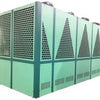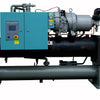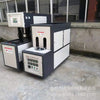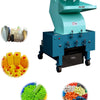Design, Applications, and Market Trends of 1.8L Extrusion Blow Molding Machines
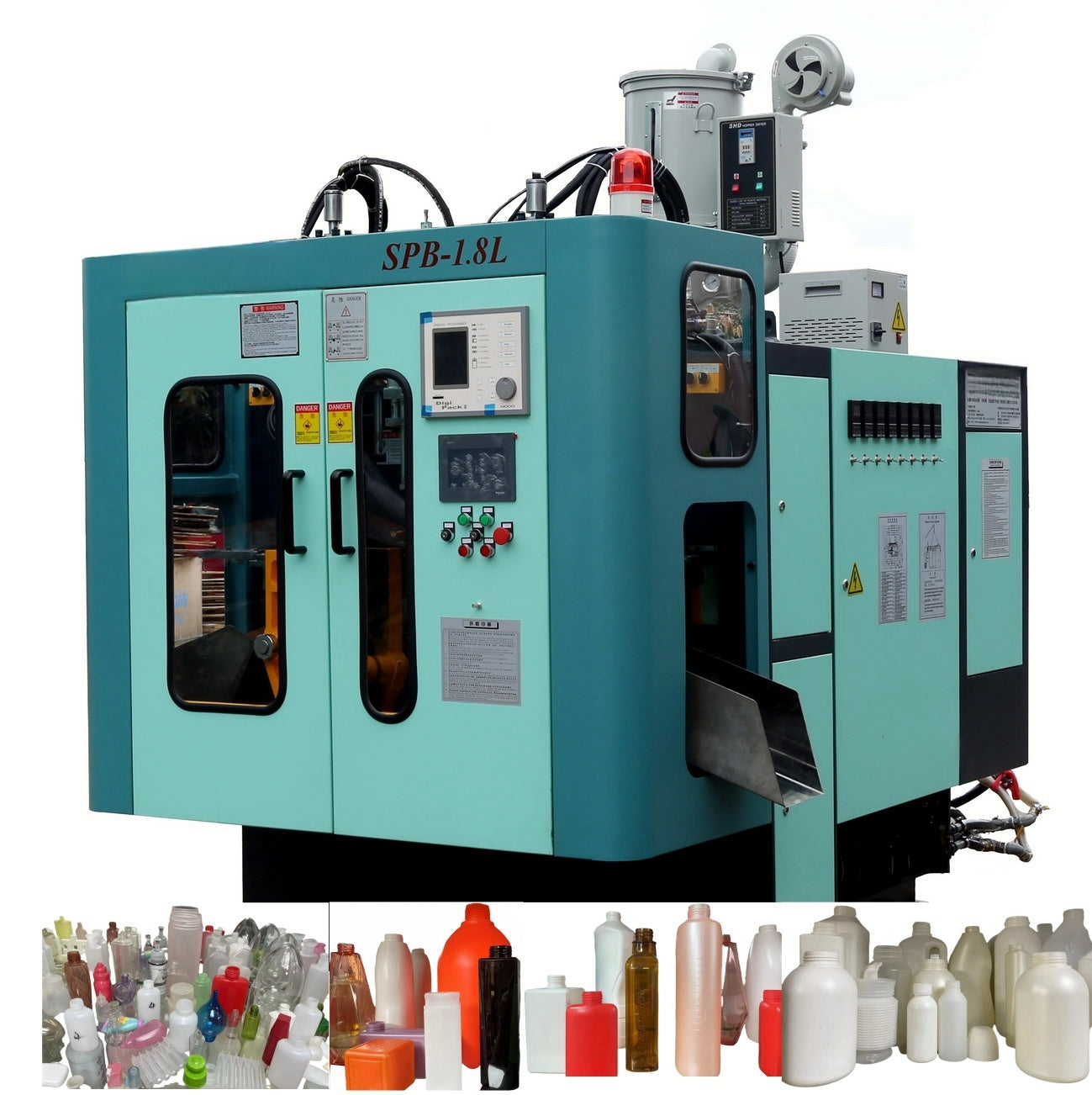
1. Introduction
Extrusion blow molding is a dominant method for manufacturing hollow plastic products, such as bottles, containers, and packaging materials. The 1.8L machine specifically targets mid-volume applications, balancing production efficiency with cost-effectiveness. This paper explores the evolution of blow molding technology, emphasizing its adaptability to modern industrial demands for precision, sustainability, and scalability.
2. Technical Design and Principles
2.1 Core Components
A 1.8L extrusion blow molding machine consists of the following key components:
- Extruder: A high-precision screw and barrel system for melting and homogenizing thermoplastic resins (e.g., HDPE, PP, PVC).
- Die Head: Features a spiral or shuttle-type flow channel to ensure uniform melt distribution. Advanced models use deep crystalline surface treatment to eliminate dead zones and reduce material residue.
- Clamping System: Utilizes hardened guide columns and linear guides for smooth, high-speed mold opening/closing.
- Air Pressure System: Delivers compressed air (0.2–0.8 MPa) to inflate the parison and shape it against the mold cavity.
- Control System: PLC-based automation with touch-screen interfaces for parameter adjustments (e.g., parison thickness, cooling time).
2.2 Manufacturing Process
The extrusion blow molding process involves four stages:
- Parison Extrusion: Molten polymer is extruded into a tubular parison.
- Mold Clamping: The parison is clamped between two mold halves.
- Inflation: Compressed air expands the parison to conform to the mold shape.
- Cooling and Ejection: The molded part is cooled and ejected.
2.3 Energy Efficiency Metrics
Modern 1.8L machines prioritize energy savings through:
- Servo-Driven Motors: Reduce energy consumption by 20–30% compared to traditional hydraulic systems.
- Multi-Zone Temperature Control: Ensures optimal melting and cooling cycles.
- Recycling Integration: Reclaims and reprocesses trim waste during production.
3. Industrial Applications
3.1 Food and Beverage Industry
- Bottles and Containers: Produces 1.8L PET bottles for mineral water, juices, and edible oils.
- Food Safety Compliance: Machines like Foord Long Blow Molding Systems use FDA-approved materials and fully enclosed sterilization chambers.
3.2 Cosmetics Industry
- Precision Packaging: Manufactures bottles with complex geometries for creams, lotions, and perfumes.
- Surface Quality: Advanced die heads ensure smooth finishes and consistent wall thickness (±0.1mm).
3.3 Pharmaceutical Industry
- Sterile Containers: Produces tamper-proof bottles for liquid medications and supplements.
- Cleanroom Compatibility: Machines like Gree Electric’s Intelligent Blow Molding Units integrate HEPA filters and IoT-based contamination monitoring.
3.4 Other Applications
- Household Chemicals: Detergent bottles and cleaning product containers.
- Industrial Parts: Lightweight fuel tanks for small machinery or automotive components.
4. Market Trends and Competitive Landscape
4.1 Global Demand Drivers
- Packaging Growth: The global plastic packaging market, valued at $500+ billion in 2025, drives demand for 1.8L machines.
- Sustainability Trends: Demand for recyclable materials (e.g., HDPE, rPET) and energy-efficient machines.
- Automation Adoption: AI-driven thickness control systems (e.g., Jomar’s Smart Blow Molding Solutions) reduce material waste by 15%.
4.2 Regional Market Dynamics
- Asia-Pacific: China’s blow molding market is projected to reach ¥150 billion (≈$21 billion) in 2025, with 1.8L machines dominating beverage and cosmetic sectors.
- Europe and North America: Demand for high-end machines (e.g., Krones’ Contiform S Block) with integrated robotics and carbon footprint tracking.
4.3 Key Players
-
International Brands:
- Krones AG (Germany): Offers hybrid machines combining extrusion and stretch blow molding.
- Sidel (France): Known for modular designs and low-energy consumption (≤0.3 kWh/L).
-
Domestic Brands:
- Fordon Machinery (China): Produces cost-effective 1.8L machines with dual-mode die heads (spiral/shuttle).
- Jomar Corporation (USA): Specializes in microcellular blow molding for lightweight containers.
5. Future Innovations
5.1 Industry 4.0 Integration
- Digital Twins: Simulates parison inflation and mold filling to optimize parameters before production.
- Predictive Maintenance: Sensors monitor wear on screws, die heads, and clamping systems.
5.2 Sustainability Advances
- Biodegradable Materials: Testing of PLA and PHA resins in 1.8L machines for eco-friendly packaging.
- Energy Recovery Systems: Captures waste heat from the cooling process to preheat raw materials.
5.3 Modular and Custom Solutions
- Quick-Change Dies: Reduces downtime during product transitions (e.g., from 1.8L to 2L bottles).
- Multi-Layer Blow Molding: Produces barrier containers for oxygen-sensitive products (e.g., beverages with extended shelf life).
6. Conclusion
The 1.8L extrusion blow molding machine plays a pivotal role in modern manufacturing, offering a balance of precision, efficiency, and cost-effectiveness. As industries prioritize sustainability and automation, advancements in die head design, energy recovery, and AI-driven controls will be critical. With the global market projected to grow at a CAGR of 5–7%, innovation in material adaptability and smart manufacturing will define future competitiveness.

